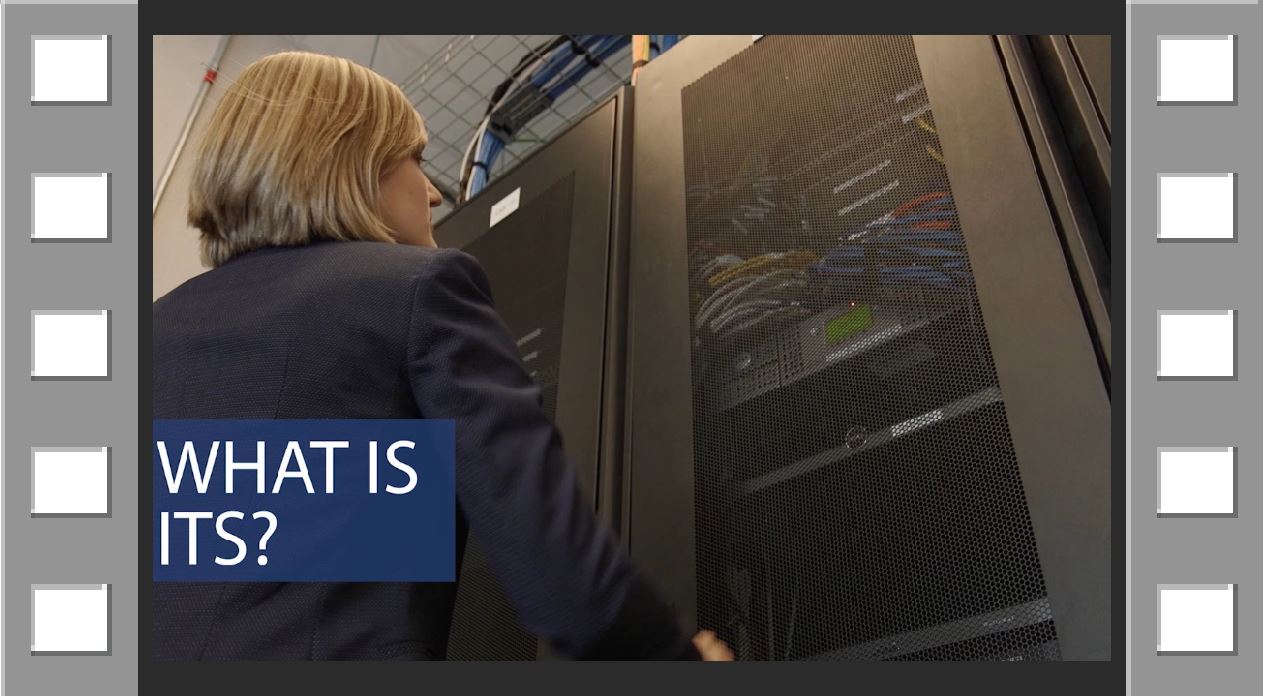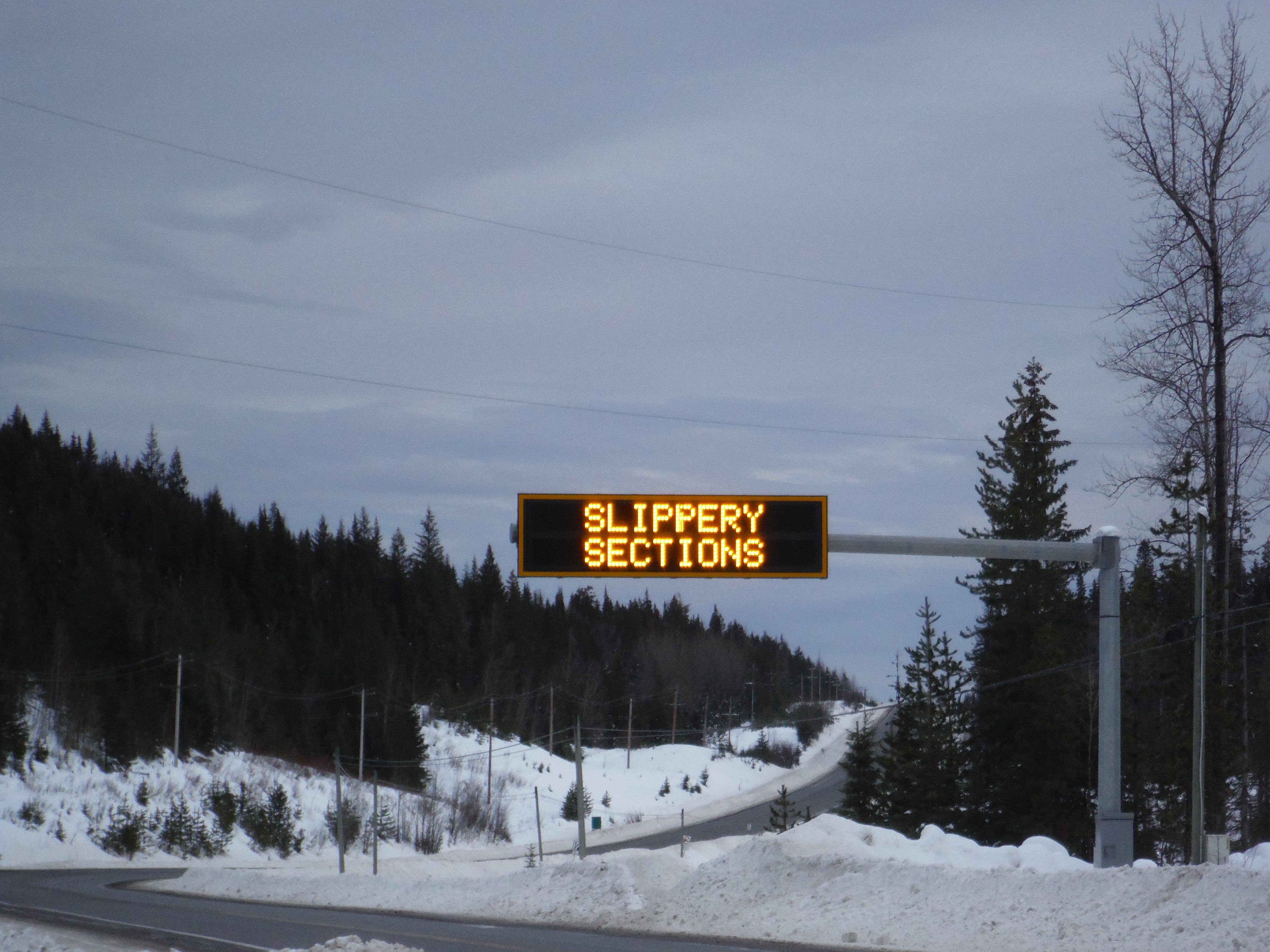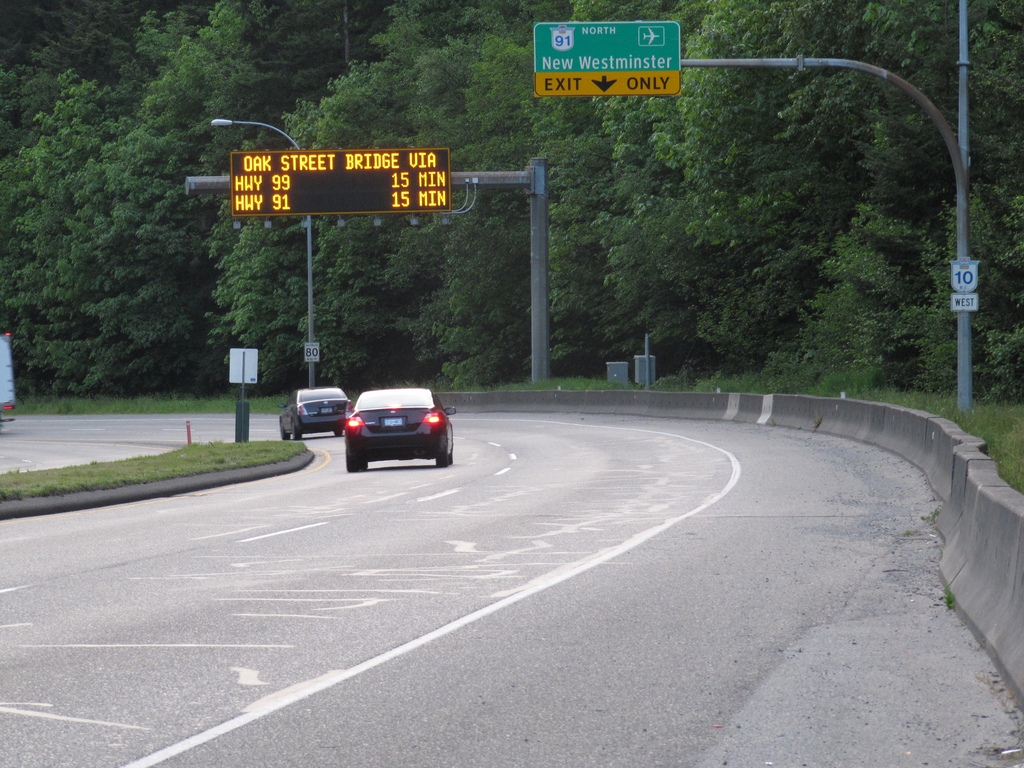
BC HighwayCams, dynamic message signs, weather stations, reversible lane control… Any idea what these things have in common?
If you guessed they’re all Intelligent Transportation Systems (ITS), you’d be right! With the advancement in technologies, this field has grown and is getting a lot of attention these days (connected/automated vehicles, smart cities, and more). ITS also helps support some of our key priorities: mobility, safety, and the efficient transportation of our road users.
What is ITS? It’s the application of advanced and emerging technologies (computers, electronic sensors and communication devices) in transportation to save lives, time, money and energy, and to protect the environment. ITS technologies help to better connect users, vehicles, and the infrastructure. And in doing so, we’re also looking to enhance the province’s livability and economic prosperity. It sounds pretty impressive but let’s take a look at some examples and discover what it really means.
Our highway cameras are a great place to start. When you’re able to access real-time information about the routes you want to travel, you’re better informed about what you may encounter, and you can plan your trip accordingly. Knowing what’s ahead, drivers are less likely to be involved in incidents by being unprepared. This helps to keep roads open and traffic moving.

Dynamic message signs (DMS) serve the same purpose. From traffic delay notification to emergency updates and more, a DMS is an invaluable tool in providing information to our road users. And when they’re connected directly to a weather station, they can let drivers know instantly whether they need to be concerned about pooling water or icy roads. The Variable Speed Limit System (VSLS) takes things further by adjusting road speeds through real-time congestion and weather-based analysis.
Reversible lane control along the Lions Gate Bridge and George Massey Tunnel are another example of ITS technology. During peak periods, the system allows operators to change the direction of traffic in one or more lanes to provide additional capacity for vehicles.
 And we’ve got lots of other ITS examples. There are special LED signs for road safety and wildlife warnings. There’s Weigh-in-Motion technology, which lets commercial drivers keep moving while being weighed, reducing travel costs and pollution at the same time.
And we’ve got lots of other ITS examples. There are special LED signs for road safety and wildlife warnings. There’s Weigh-in-Motion technology, which lets commercial drivers keep moving while being weighed, reducing travel costs and pollution at the same time.
We have a lot more to talk about with ITS, and you can look forward to learning more about it in future posts.
Have you ever heard of ITS before? Watch the video below!
How does the not so intelligent lights at the intersection of braid and brunette in new west operate , I think they get a little confused when a single B.N engine trips the signal. I think the four directions communicate , maybe argue, and 45 years the northwest bound from the canfor mill( not sure if that spur is called braid) gets his way. 45 years and that intersection has only gotten worse. It works so good you installed the same model on hwy 7( lougheed ) and Nelson near mission. Oh…. I see one of your smart signs saying no left turn for westbounders, in case you can’t hear or see there is a train. But like braid, the northbounders have the green( the only direction like braid that can’t go) probably bought the equipment at a garage sale hosted by the original architect of the Cape Horn interchange( also the same guy who designed the maple ridge 9 hole golf course on 207. I won’t even get into how the light cycle always for braid and then the southwest leftturner gets a light long enough for 10 cars , but there’s none. The brunette exit is so butchered now,, then braid , does anyone drive Columbia, royal, or front st, all that , finally to twirl over the queensboro br. From mission to new west , nothing smart, what is the opposite of its? What do you call the old system? Do the people that set the lights timing , do they test to make sure that the change was there plan? Or a month later actually drive and rest there handywrk? I can list 7 intersections on lougheed hwy right now, whoever set( has changed it operating should be fired, or at least investigated. Or , better idea. Set all the intersections the same as these. What else can you do to ensure flow is not interrupted? I know. Hov lanes on lougheed but stops at the Pitt bridge, Mary hill bypass does not subscribe to the hov.system, but the no1 does. A vip pass to the front of the next line. Poco would not benefit from repainting of the lanes.
Safety might be the only thing in the moto being achieved. And that’s debatable. Tired of this barbaric traffic light system from the 40s. If technology that senses the volume doesn’t exist. Manually operate , I put faith in an average grade 8 et with a controller and a high vantage point and a little incentive( different level of efficiency) oh might compromise safety. This is rant, tired from all the lights cycling the worst way while the roads are being painted nice , just painted.
Hi Darren,
Thanks for sharing your thoughts and frustrations with us. We have passed on your comments to the crews responsible for this lower mainland area maintenance to review.
Yes I have. I’m doing lots of research about it and how it can connect to automatic traffic counters in classifiers (ATCC).
Sounds interesting, Cam! Thanks for your comment.
Nice blog ! It gathers information about Intelligent Transport Systems that support some of their key priorities mobility, safety, and the efficient transportation of our road users.
AMD Engineering, glad you liked our blog!
Thanks for the wonderful post.
Best Regards to all who are devoted in making our world safe efficient & constant progress in making our lives worth living by the Intelligent & Innovative Traffic Controllable systems with the development of software’s & technology.
The downside of ITS is that as we become more dependent on them the bigger will be the impact when they go down because of ‘technical difficulties’ like the one affecting Drive BC at the moment.
Thanks for the comment Nick. It is our hope and belief that the benefits of the system online will far outweigh the downside of technical interruptions.
In the UK they are conducting a trial of using artificial intelligence to monitor highway cameras to detect accidents (New Scientist 11 May 2019 page 16). The AI tracks movement of vehicles through a series of cameras and flags anomalies in traffic flow to highways staff. If this works it would seem to be ideal to apply to the cameras in BC’s variable speed zones on the Coquihalla and Trans-Canada. Those zones have cameras at frequent intervals and the highways have no feeder roads so it should be very easy to detect incidents where traffic is stopped or slowed. This would be particularly valuable as some spots on those highways have poor cellphone coverage. Does the Ministry have any plans to do this? I also wonder how actively the Ministry manually monitors its highway cameras – do you ever detect incidents on them before they are reported to the RCMP or discovered by maintenance operators?
Hello Nick and thank you for your suggestion. We reached out to our ITS folks who gave us the following information.
At this time the ministry does not have plans to do something of this nature. The primary reasons are:
Data storage issues – this would require a cloud server to host the size of data required, and due to the cloud being primarily hosted in America or by an American company (and their associated CLOUD Act), there are privacy and security issues that prevent us from moving forward in this direction.
Data storage volume cost. Our fibre network does not currently extend to these areas and transmitting the data via cellular/satellite networks is cost prohibitive at this time.
At this time the ministry (largely due to the fibre optic network) the ministry is only actively monitoring the Lower Mainland area. Monitoring over cellular/satellite would again be cost prohibitive. We hope that this helps answer some of your questions. Thanks again for connecting with us here.
This morning there is snow on the Okanagan Connector – it was clearly visible on the highway cameras for over 90 minutes before you issued a report on Drive BC warning drivers about the adverse road conditions. About time you started making better use of ITS.
Thanks for your note Nick – we appreciate your diligence. We are following up on this as we speak.
Hi,
Thank you for the article introducing ITS. I am a university student who studies Computer Science. And I am very interested in the intelligent system which manages a city’s traffic. I live in Burnaby now. Is it possible connecting me with some control centers, if there is any, in my city so that I could see how ITS is applied to real life for real world problems. I would appreciate it if I could get contacted to ITS control centers around my city and professionals working there.
Regards,
Bernard
Hi Bernard. Always good to hear from someone interested in ITS. I’m working on connecting you with someone. Keep you posted.
Thanks! Please keep me updated for any progress.
Hi,
Thank you for your information about ITS. I have 13 years of experience in road transportation management and some years in ITS. I was the provincial manager for the road management center in Iran which was in charge of all ITS subsystems such as VMS’s, VSL’s, CCTV’s, Traffic meters, Lane Control, Your Speed and Speed limit signs and also some hybrid systems to calculate the Travel time and Traffic rush hours prediction.
Now I ham in Vancouver as a permanent resident. Could you please do me a favor and let me know how I can find a job in the ITS or Road Management field.
Best Regards,
Mehran Jamshidi
Hi Mehran,
Thanks for connecting with us and thinking of the BC Public Service as a place to work! Due to fiscal restraint, there is very little hiring activity in the BC government right now, but we encourage you to check our employment opportunities website frequently for new postings that match your skills. http://www2.gov.bc.ca/myhr/article.page?ContentID=620ede5d-b0cf-6c2e-fe75-4cd557824566